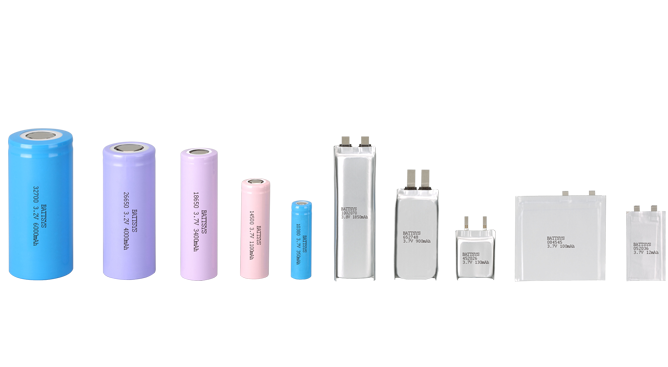what is the best 18650 battery.
The 18650 lithium battery brand refers to a lithium battery brand with a diameter of 18mm and a length of 65mm. It is divided into two brands based on the material of the battery cells: lithium iron phosphate battery supplier brand and lithium cobalt oxide battery brand. The brand voltage of lithium cobalt oxide batteries is 3.7V, and the brand voltage of lithium iron phosphate battery suppliers is 3.2V. Due to its external dimensions being the same as AA 5 # batteries, one 18650 lithium battery brand and one placeholder can be used in place of two AA batteries. Compared to wholesale nickel hydrogen rechargeable batteries, lithium battery brands have the advantages of light weight, low self discharge, and superior discharge performance. Therefore, they are widely used by photography enthusiasts in digital cameras and electronic cigarettes, replacing wholesale nickel hydrogen rechargeable batteries.
BATTSYS Battery is a leading manufacturer of 18650 lithium battery brands in the industry, and can customize various specifications of 18650 lithium battery brand groups according to customer needs. Here are three common questions about 18650 lithium battery brands:

1.18650 Selection Questions
Due to the voltage range of lithium battery brands (2.5V-4.2V), overdischarging or overcharging can damage the battery. Adding a protective plate can protect the battery. As 18650 batteries with protective plates are several millimeters higher than ordinary No. 5 batteries, special attention should be paid to the fact that some camera covers cannot be covered, which can also affect the battery contacts of the camera. Over time, the elasticity will decrease, causing poor contact. Due to the automatic power failure of the protection circuit at 2.5V, the camera may suddenly lose power, which may cause damage to the camera.
2.18650 Overdischarge Issue
Attention should be paid to some details at the lowest voltage without a protective board:
*The voltage range of a camera is generally 2.4V to 4.2V
So the camera will often shut down when the voltage reaches 2.4V. The camera has the option to choose the battery type (alkaline, nickel battery, lithium battery brand). Choosing different battery types will result in different shutdown voltages. Only when choosing a lithium battery brand, its shutdown voltage is 2.5V. After power failure, please replenish the battery in a timely manner to avoid over discharging the battery.
3.18650 overcharge issue
After overcharging lithium battery brand cells to a voltage higher than 4.2V, side effects will begin to occur. The higher the overcharge voltage, the higher the danger. When the voltage of a lithium battery cell exceeds 4.2V, less than half of the lithium atoms remain in the positive electrode material, causing the storage compartment to collapse and resulting in a permanent decrease in battery capacity. If charging continues, as the storage compartment of the negative electrode is already filled with lithium atoms, subsequent lithium metal will accumulate on the surface of the negative electrode material. These lithium atoms will grow dendritic crystals from the negative electrode surface towards the direction of lithium ions. These lithium metal crystals will pass through the separator paper, causing a short circuit between the positive and negative electrodes. Sometimes the battery explodes before a short circuit occurs, because during overcharging, materials such as electrolyte will crack and produce gas, causing the battery casing or pressure valve to swell and rupture, allowing oxygen to enter and react with lithium atoms accumulated on the negative electrode surface, leading to an explosion.
Therefore, when charging lithium battery brands, it is necessary to set a voltage upper limit in order to simultaneously consider the battery's lifespan, capacity, and safety. The ideal upper limit of charging voltage is 4.2V. There should also be a lower voltage limit when discharging lithium batteries. When the voltage of the battery cell is below 2.5V, some materials will begin to be damaged. Due to the self discharge of the battery, the voltage will decrease over time. Therefore, it is best not to discharge it to 2.5V before stopping. During the period when lithium battery brands discharge from 3.0V to 2.5V, the energy released only accounts for about 3% of the battery capacity. Therefore, 3.0V is an ideal discharge cut-off voltage. During charging and discharging, in addition to voltage limitations, current limitations are also necessary. When the current is too high, lithium ions cannot enter the storage cell in time and will accumulate on the surface of the material.
Customization is available upon request: single piece, with protective board, with temperature control switch, PTC, NTC, outgoing line, plug, battery pack, etc. Interested parties are welcome to contact us for further discussion.
